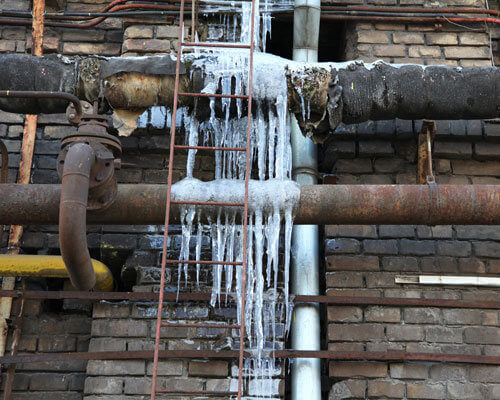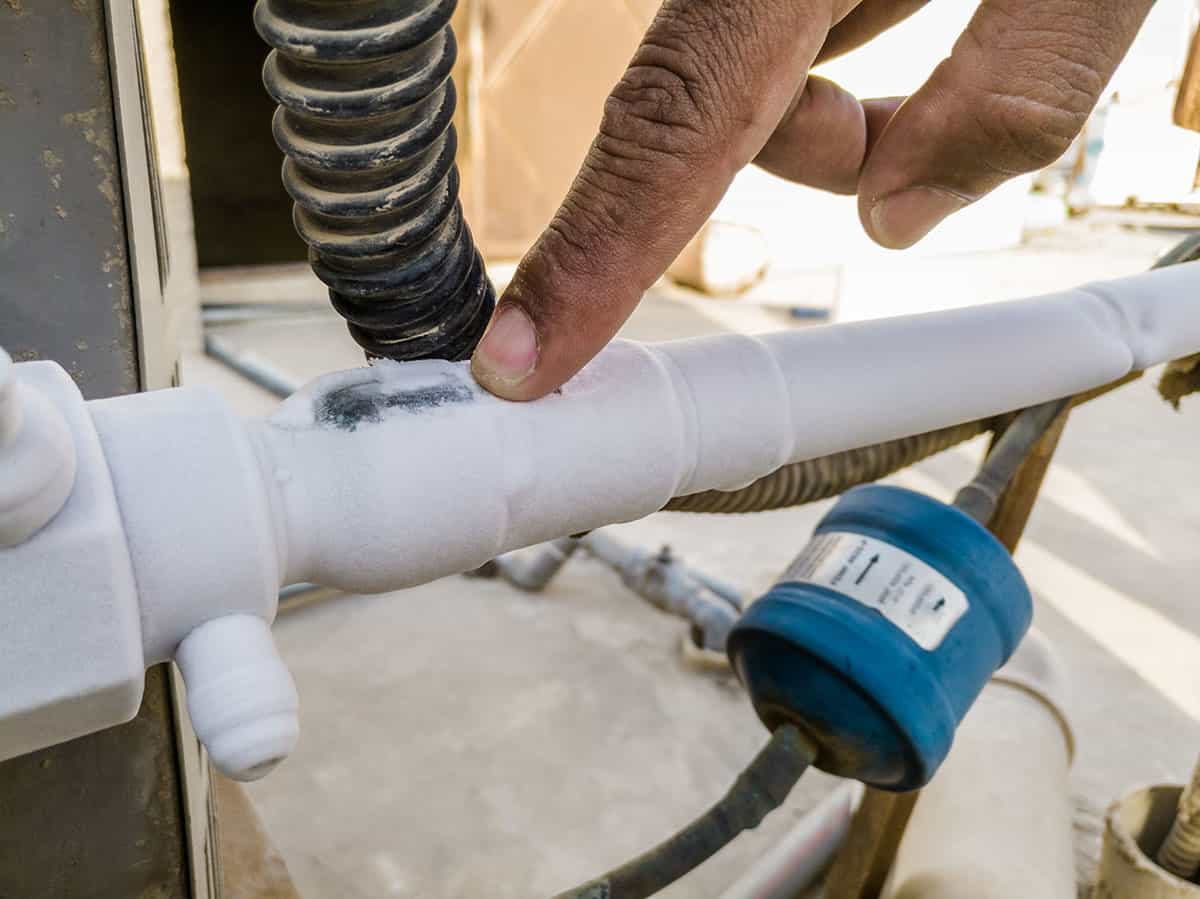Dealing With a Frozen AC Pipe - Guidance for Addressing the Issue
Dealing With a Frozen AC Pipe - Guidance for Addressing the Issue
Blog Article
This great article in the next paragraphs involving What Causes AC Pipes To Freeze? is amazingly remarkable. You should see for yourself.

Introduction
Uncovering that your AC pipeline is iced up can be concerning, especially throughout warm summer months when you depend on your a/c unit one of the most. Recognizing what to do in such a circumstance is vital to stop more damages to your air conditioning system and guarantee your comfort inside your home.
Comprehending the Causes
A number of factors can add to the cold of an air conditioner pipeline. Comprehending these causes can aid you attend to the problem efficiently.
Lack of Airflow
One common cause of an icy a/c pipe is inadequate air movement. When the air flow over the evaporator coil is limited, it can trigger the coil to go down below freezing temperature level, causing ice formation on the pipeline.
Low Refrigerant Levels
Not enough refrigerant levels in your air conditioner system can also cause a frozen pipe. Low cooling agent levels can trigger the pressure in the system to drop, resulting in the freezing of wetness on the evaporator coil.
Cold Weather Conditions
In chillier environments, freezing temperature levels outside can contribute to the freezing of air conditioning pipelines. If your AC system is not properly insulated or if there are leaks in the ductwork, chilly air can penetrate the system, triggering the pipe to ice up.
Dirty Air Filters
Dirty or clogged air filters can limit air movement in your air conditioner system, resulting in various problems, including a frozen pipe. It's necessary to change or cleanse your air filters frequently to guarantee appropriate airflow and avoid ice buildup.
Indicators of a Frozen A/c Pipe
Recognizing the signs of an icy air conditioning pipeline is important for timely activity.
Decreased Airflow
If you see a significant reduction in air movement from your vents, it could suggest an icy pipeline.
Ice Buildup on the Pipe
Visible ice build-up on the cooling agent line or the evaporator coil is a clear indication of a frozen air conditioning pipeline.
Odd Sounds from the Unit
Uncommon audios, such as hissing or gurgling, originating from your a/c device can signify that there's ice existing on the pipeline.
Immediate Actions to Take
When confronted with an icy a/c pipe, it's necessary to act rapidly to avoid further damages to your air conditioning system.
Switching off the AC
The primary step is to switch off your air conditioning unit to avoid the system from running and exacerbating the problem.
Checking for Blockages
Evaluate the area around the interior unit for any kind of obstructions that might be blocking air movement, such as furniture or drapes.
Thawing the Pipe
You can utilize gentle techniques like positioning towels soaked in cozy water around the frozen pipe to help thaw it gradually.
Safety nets
Taking preventive measures can aid prevent future events of an icy air conditioning pipeline.
When DIY Methods Fail
If your efforts to thaw the pipeline or address various other issues are unsuccessful, it's time to employ a specialist.
Importance of Hiring a Professional HVAC Technician
A certified HVAC specialist has the experience and devices necessary to diagnose and repair problems with your air conditioning system safely and efficiently.
Regular Maintenance Checks
Schedule regular upkeep get in touch with a specialist HVAC professional to make certain that your a/c system is running effectively.
Changing Air Filters
On a regular basis replace or clean your air filters to avoid air movement restrictions and keep optimal performance.
Protecting Exposed Pipes
If your air conditioner pipelines are exposed to cold temperatures, think about protecting them to stop cold during winter season.
Seeking Professional Help
If DIY techniques stop working to fix the problem or if you're unsure regarding how to continue, it's best to look for aid from a qualified HVAC technician.
Conclusion
Taking care of a frozen air conditioning pipe can be a frustrating experience, yet recognizing how to respond can help reduce damage and restore convenience to your home. By recognizing the reasons, identifying the signs, and taking punctual activity, you can successfully deal with the issue and prevent future events.
Frozen AC Line: Why It Happens & What To Do About It
A frozen AC line can be a rather peculiar sight in a place like Phoenix, Arizona where nothing ever freezes. In this post, we’ll discuss what makes an air conditioner line frozen – and what you can do about it.
Dirty Air Filters
Did you know that you should be cleaning or replacing your air filters on a monthly basis? Failing to do this can result in airflow issues that, in turn, cause your evaporator coils and lines to freeze over. You’ll notice a buildup of ice on both components, although the buildup on your pipes will, of course, be more evident unless you open your air condition up to reveal the coils.
What To Do About It
Give your air filter a good cleaning if it’s reusable. If not, replace the filter outright. Next, switch your air conditioner’s fan setting on and leave it there for 2-3 hours. This will draw warm air in, helping to thaw your evaporator coil. You can also check out this article for some tips on cleaning the coils themselves if you’d like to speed the process up. Before you switch the unit back to its normal state, make sure the supply vents are completely unobstructed and free of dust or other debris.
If you keep having this issue even after replacing your filters regularly, contact a local HVAC repair company and have them inspect your evaporator coil, ductwork, and any other components that may be at fault. If you live in the Phoenix, Arizona area, give American Home Water and Air a call.
Low Refrigerant Levels/Leakage
What To Do About It
Contrary to what air conditioner “recharge” companies often tell their clients about refrigerant, it should never need to be simply refilled. You see, refrigerant runs in what experts refer to as a “closed loop.” Refrigerant really shouldn’t be leaving that loop. If it is, you’ve got a leak.
Paying someone to come and pump more refrigerant into your system (aka “recharge” it) isn’t the solution. Doing that will simply kick the can down the road. Besides, refrigerant leaks can be harmful to the environment and people in your home.
Rather, you need to take care of the leak with the help of a technician. Check out this article for some more information about dealing with air conditioners that are leaking refrigerant. Before you contact a technician, switch your thermostat to the off position. Then, switch the fan setting on and let it run for 2-3 hours so the unit can thaw.
Improper Temperature Setting
Improper temperature settings can also cause a drop in your air conditioner’s pressure. What many people don’t realize is that air conditioners are actually designed to run when temperatures have fallen above roughly 60 degrees Fahrenheit. If you run the unit when it’s cold outside, you’ll run into many issues, including frozen components.

I was made aware of that editorial about How can I fix an air conditioner’s frozen pipe? from an acquaintance on another site. Liked our write-up? Please share it. Let somebody else locate it. I take joy in reading our article about What Causes AC Pipes To Freeze?.
Book Your Appointment Report this page